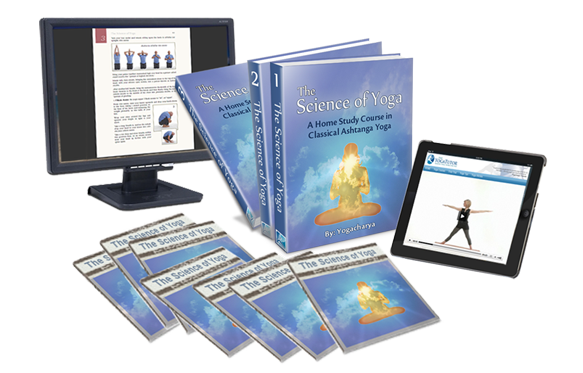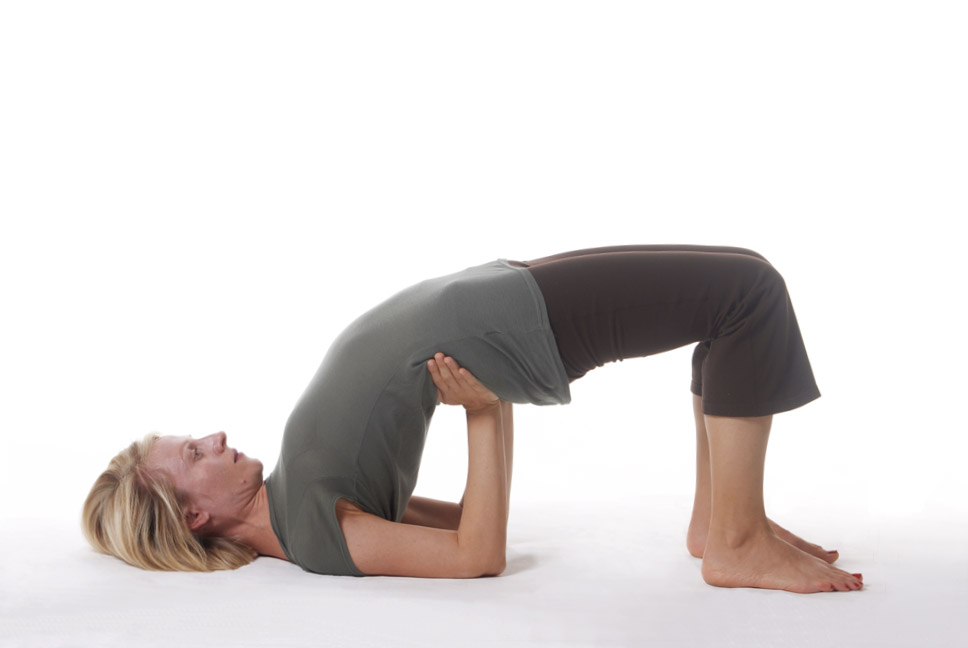[ Excerpt from The Science of Yoga, page 542 ]
Sethu means "bridge," and bandha means "bound." Therefore, this is "the bound bridge posture," whereby the trunk is elevated as a bridge with the support at one end upon the feet and the other upon the shoulders and head.
In this case, the term bandha refers to a 'restriction' or a 'holding' of the musculature into a particular formation.
Technique
- From the sarvanga asana starting position, exhale and slowly lower the right leg down to the floor.
- Inhale fully in this position, then exhale and lower the left leg down to the floor as well.
- In this fully extended bridge position, try to bring both of your feet flat upon the floor, while at the same time keeping the legs and knees together.
- Hold this position as relaxed as possible and perform 3 to 6 rounds of deep breathing.
Note: The elbows should be held close together (shoulder-width apart) to ensure good support and maximum lifting of the hips.
There are two ways to come out of this pose:
- A return to the upright (vertical) position by inhaling and slowly lifting one leg at a time.
- Slowly lift the body back up into the perfectly vertical sarvanga asana and pause for a few gentle breaths.
- Return back down to shava asana in the same way as for the shoulder stand.
or
- B Slide your elbows outwards and walk your feet slightly farther away.
- Slowly lower your torso, vertebrae by vertebrae down to the floor.
Effects and Benefits
This practice stimulates the pancreas while at the same placing pressure into the lower back, benefiting the kidneys and harmonizing the functions of the kidneys and bladder with the other glands of the body. The increased blood flow to the abdominal region benefits all of the abdominal organs.
In this position, the lumbar curvature of the spine is accentuated while the abdomen and anterior pelvic region are stretched. The thigh muscles are stretched along with the hip-flexors of the anterior pelvis. This provides a great relief to the tension in this area which develops as a result of poor posture and body mechanics, inactivity and prolonged chair-sitting...
[Continued...]
DISCLAIMER:
The contents of this web page are intended for informational purposes only. One should not engage in any yoga practices based solely upon the directions given on this web page or any other page of this web site. Anyone atempting to perform any of the yoga exercises introduced on this website assumes full responsibility and does so at their own risk.
---------------------
NOTE: This yoga article is an excerpt from The Science of Yoga, an online yoga training program with streaming yoga videos and 600 pages of step-by-step yoga instruction.

"The Science of Yoga is a course worthy of
leather binding and an honored place in the
finest libraries in the world
... It is indeed a masterful work."
Dr. John Michael Christian
AwakeningWithYoga.com
Learn More About
The Science of Yoga Course
|







